I am going with this woodland themed wallpaper from Nestig. The name of it is Busy Brook. We are waiting to find out whether baby will be a boy or girl so we’re doing a gender neutral nursery. We went with the linen color but they also have pink and blue.

Devin and I both grew up in Wisconsin, we love being outdoors and we hope to one day have a bunch of land and raise our children in the countryside, loving the outdoors, and exploring. We can’t quite make that work as we move around with Devin in the military, so instead we’re bringing the countryside home! I want this nursery to feel like a peaceful, sunny countryside and this wallpaper is perfectly fitting.
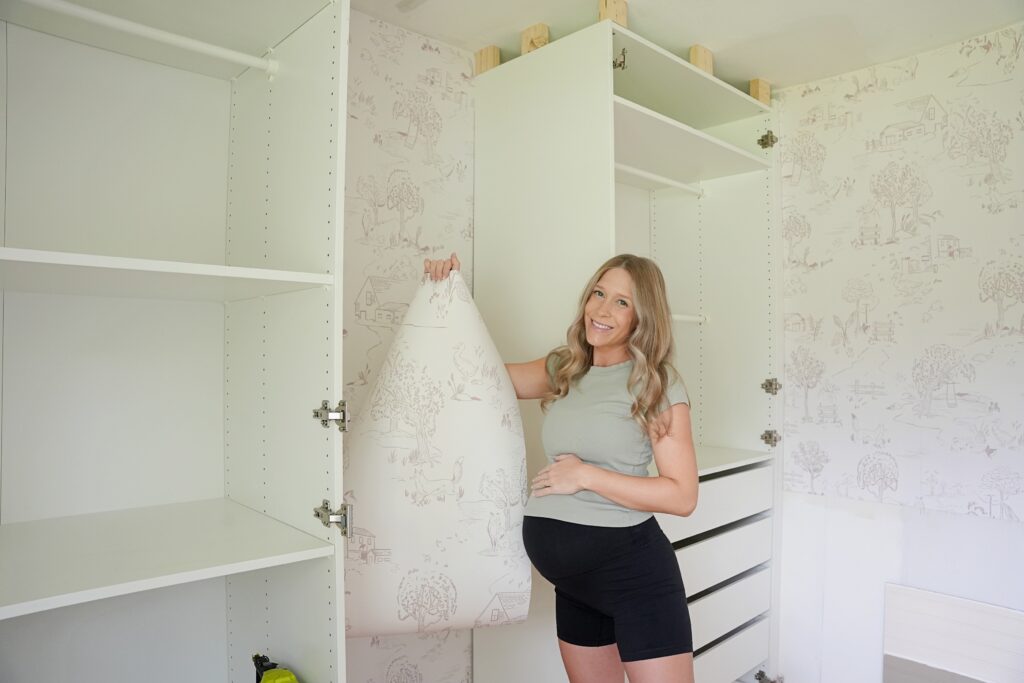
This is a standard wallpaper that requires paste – it’s not peel and stick. But some of the tips that I talk about apply to peel and stick wallpaper too.
TOOLS/MATERIALS
These are the tools that I used for hanging wallpaper.
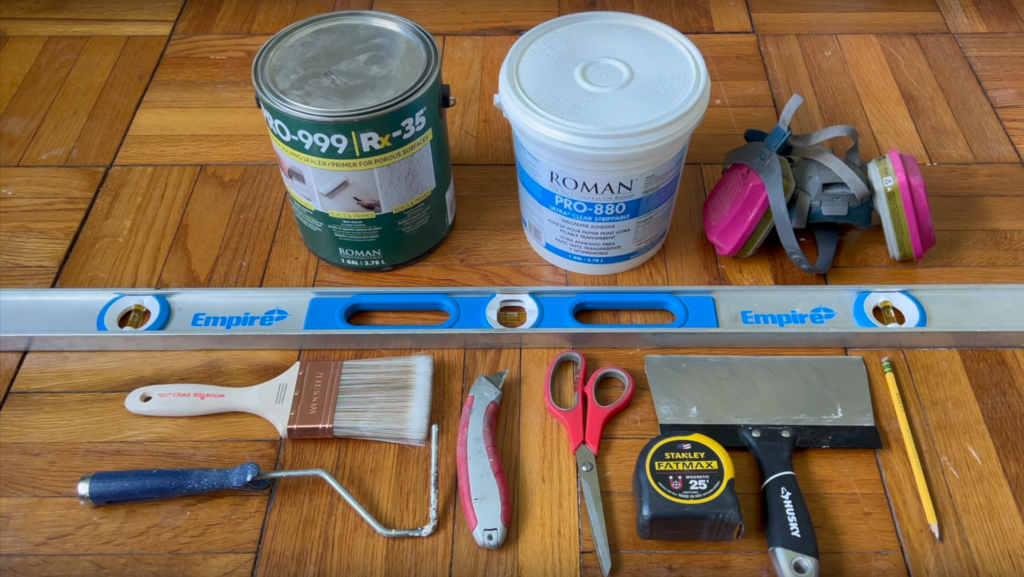
I recommend working on a long table if you can. Especially if you’re applying paste to your wallpaper. But for me it was easiest just to lay everything out on the floor.
| Tools/Materials | Link |
| Nestig Wallpaper | https://www.nestig.com/products/busy-… |
| Roman PRO-880 Wallpaper Adhesive | https://bit.ly/4cmXCMt |
| ROMAN PRO-935 Primer | https://bit.ly/45pKsf6 |
PREPPING YOUR WALLS
Before hanging up the wallpaper there’s some prep work that needs to be done.
First you need to pay attention to the type of texture that’s on your walls. Generally, you’ll want your walls to be as smooth as possible so that none of the texture shows through your wallpaper.
Some wallpaper is thick enough that it won’t show any texture – just be sure to look at the specific application instructions for your wallpaper to determine if you need to have smooth walls or not.
This is a very thick and high quality wallpaper but they still recommend having smooth walls so I’m going to go ahead and try to make them as smooth as I can.
There’s a few ways to smooth the texture on your walls, one is sanding and two is applying a skim coat to your walls.
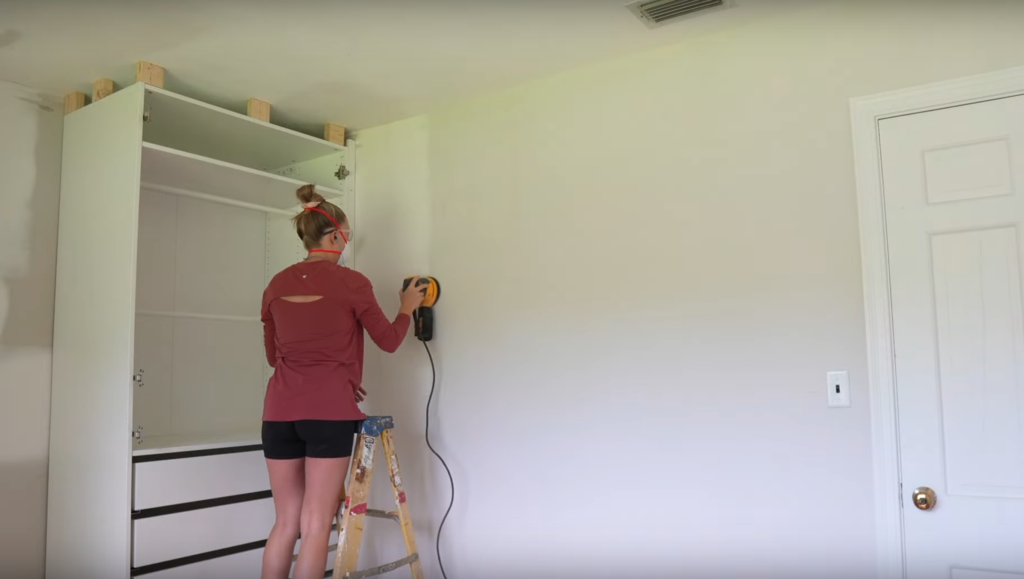
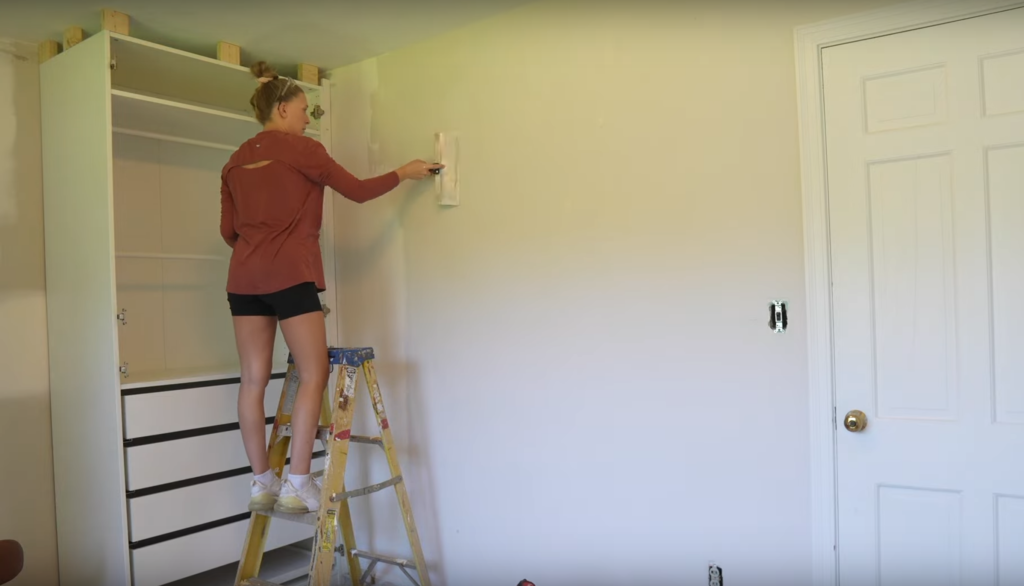
We have plaster walls and just some slight bumpy texture so I tried a few different techniques. There’s no way a little block sander would make a difference on these plaster walls, it’s like sanding concrete… so instead. I used my orbital hand sander to knock down any of the bumps.
This was taking a while so I thought of doing a skim coat instead. I was making such a mess and will have to make even more of a mess, so I gave up on that and went back to sanding.
If you have heavily textured drywall, a skim coat may be your only option, because you don’t want to damage your drywall with a sander.
So if that’s the case, pick up some joint compound and a long drywall knife and apply a thin coat or two of joint compound to your walls. After the joint compound is dry you can take a block sander and sand them down smooth.
I went around the room with the orbital hand sander and knocked down all the bumps on the top half of the walls since I’m only doing wallpaper on the top half.
After sanding I went around and wiped down all the walls so they were dust free.

Now, whether you did sanding or did joint compound you’ll want to apply a coat of primer to your walls so that your wallpaper sticks better.
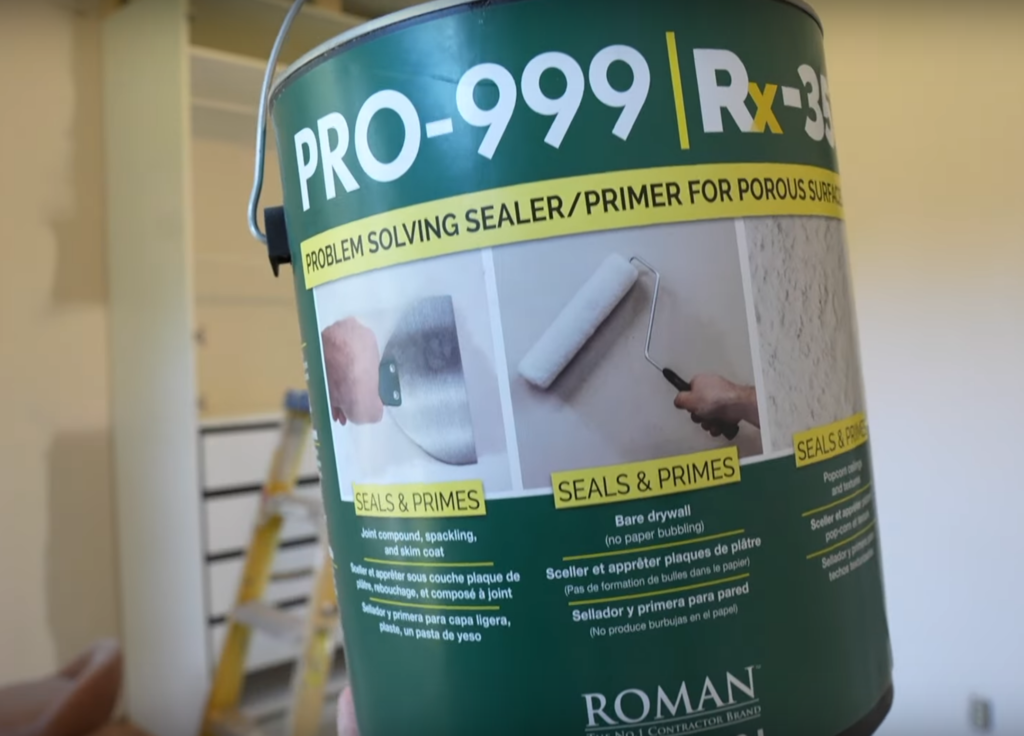
My wallpaper instructions recommend ROMAN PRO-935. I couldn’t find that in stores so instead I used the PRO-999 which is very similar.
This primer dries clear and it leaves a bit of tack which makes it a super great bonding surface for your wallpaper.
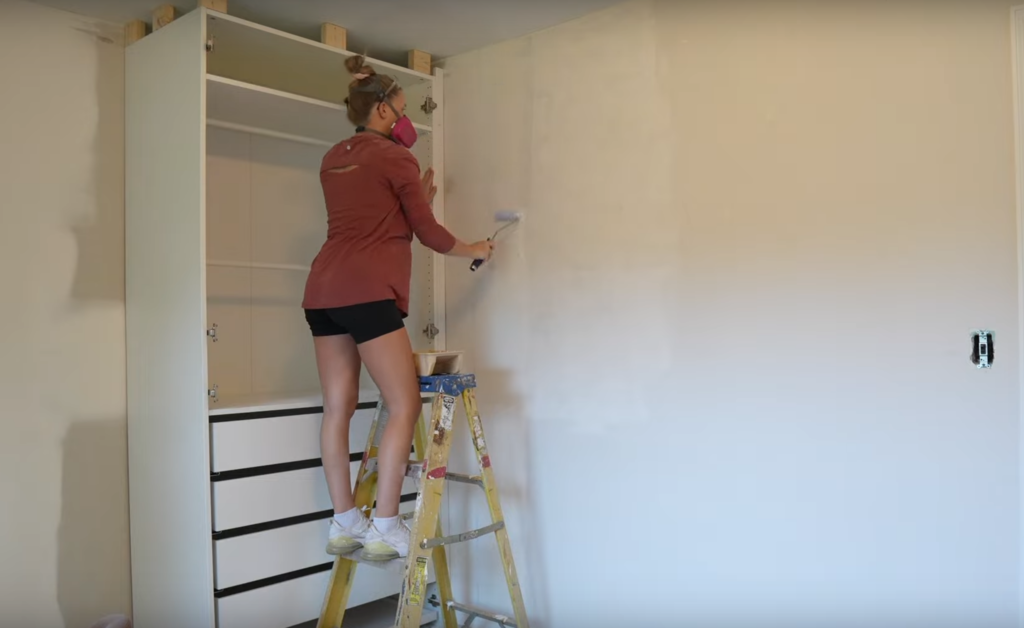
We had to do some drywall patch work on our walls previously so we had two different tones going on with the white drywall compound and the gray wall paint. I wish I would’ve primed or painted the walls one solid color first like white or the same gray – especially with white wallpaper because on this first section you could very slightly see the different wall colors behind the wallpaper.
Soo…. Major tip – make sure your walls are all one solid color before wallpapering!
Now that the primer is finished and dried, let’s prep the wallpaper!
PREP FOR WALLPAPER
Here’s the wallpaper adhesive that was recommended in the instructions of the wallpaper. In the wallpaper instructions it says that you can apply this paste directly to the walls or onto the wallpaper.
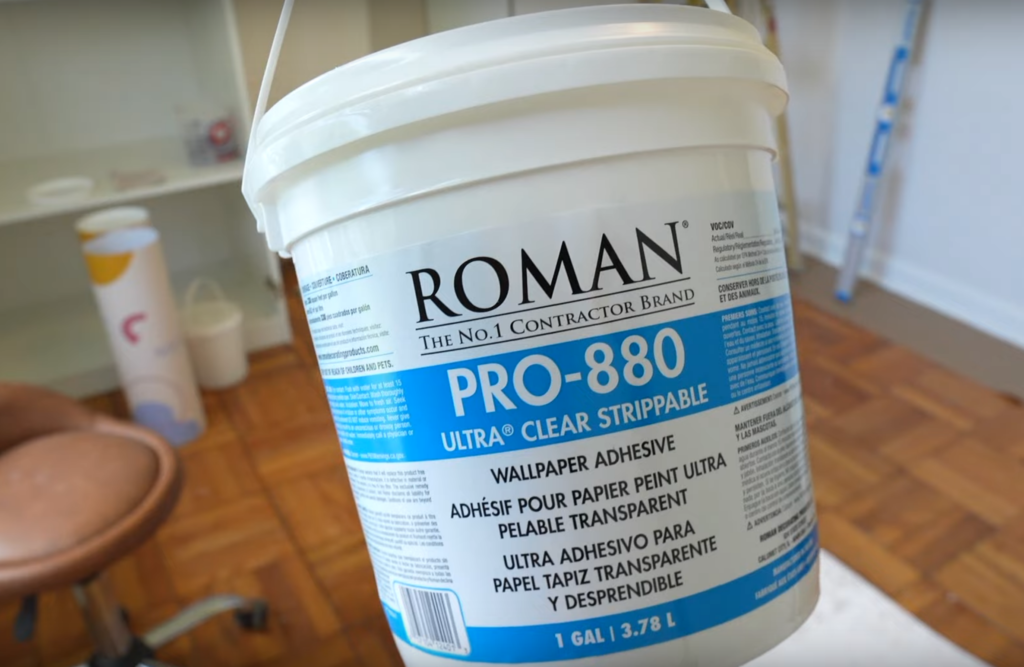
I’ve done wallpaper in the past where you apply it to the wallpaper, then you have to book the wallpaper you know, folding in the edges and that is just a headache so I tried applying the paste directly to the walls and it was sooo much easier!!
This wallpaper comes in 19 1/4” width and either 4’, 8’ 10’ or 12’ lengths. There are wallpaper calculators online that you can use if the supplier of the wallpaper doesn’t already have one for you to use.
I got 8’ panels but I’m only going about 5’ down the wall so I pre cut each panel to 5’ before I hung it.
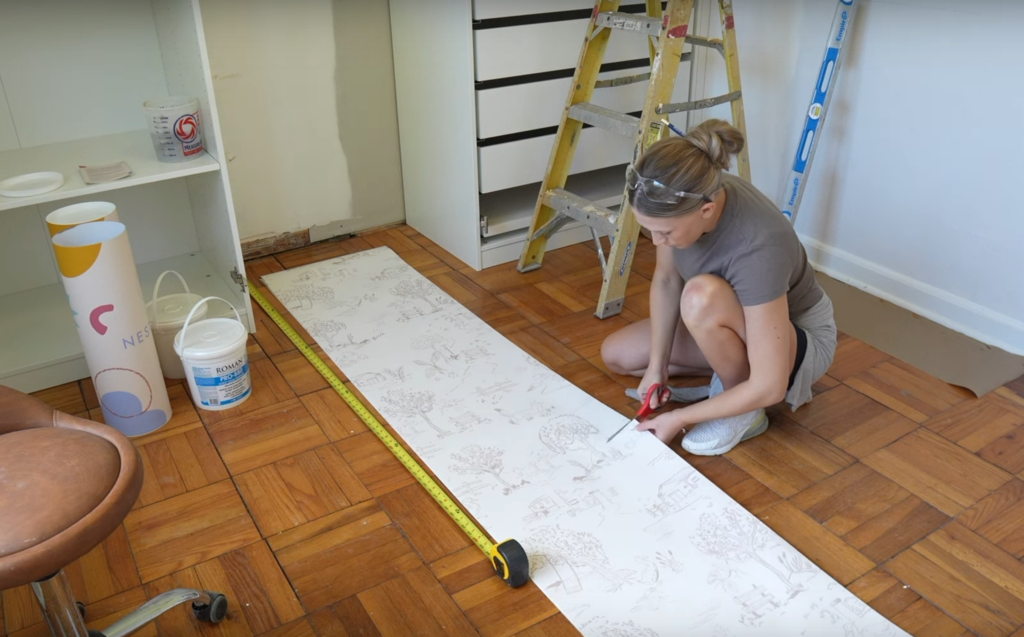
I chose the corner of the room that I wanted to start in. This wallpaper comes in pattern panel “a” and pattern panel “b” so I made sure to work clockwise.
It’s very important for your first panel to go up level so that it doesn’t throw off the rest of the panels.
To ensure this, I took a level, measured out 19 1/4 inches and marked a level line where the edge of this first panel needs to sit.
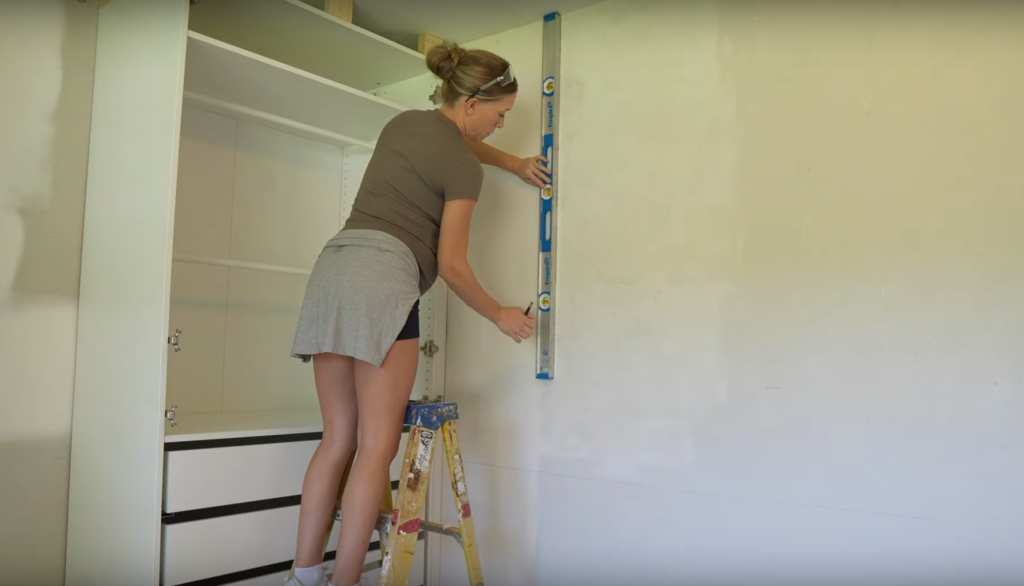
Fortunately we are installing crown moulding over top of the wallpaper so the wallpaper didn’t need to go all the way to the ceiling, I had a few inches to play with there so that made it a bit easier. I’m also applying hardboard to the bottom half of the walls and it will overlap the wallpaper a bit so I didn’t have to be exact where the wallpaper ended either.
If you do have to be spot on at the ceiling I recommend installing the wallpaper with a bit of overhang at the top so that you could just trim off the excess nice and straight after each panel is installed.
HANG WALLPAPER
For glue I’m using this Roman PRO-880 clear strippable wallpaper adhesive.

It’s supposed to have great adhesion and also allow you to strip the wallpaper later on without damage.
I have my guide line marked out and I have my first panel cut down to size, now I’m taking a large paint brush and applying a thick coat of the wallpaper adhesive.
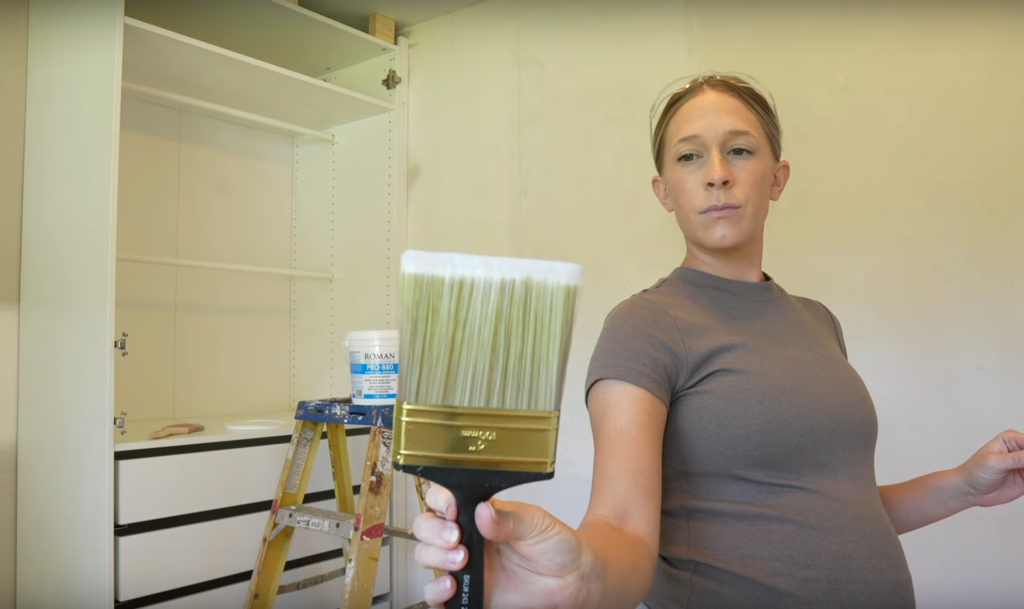
I grabbed the wallpaper and started to stick it to the wall near the ceiling. Once it was sticking to the wall I worked my way down that guideline to make sure the wallpaper followed that line down the wall perfectly.

After the panel was level I continued to smooth out the rest of the wallpaper onto the wall.
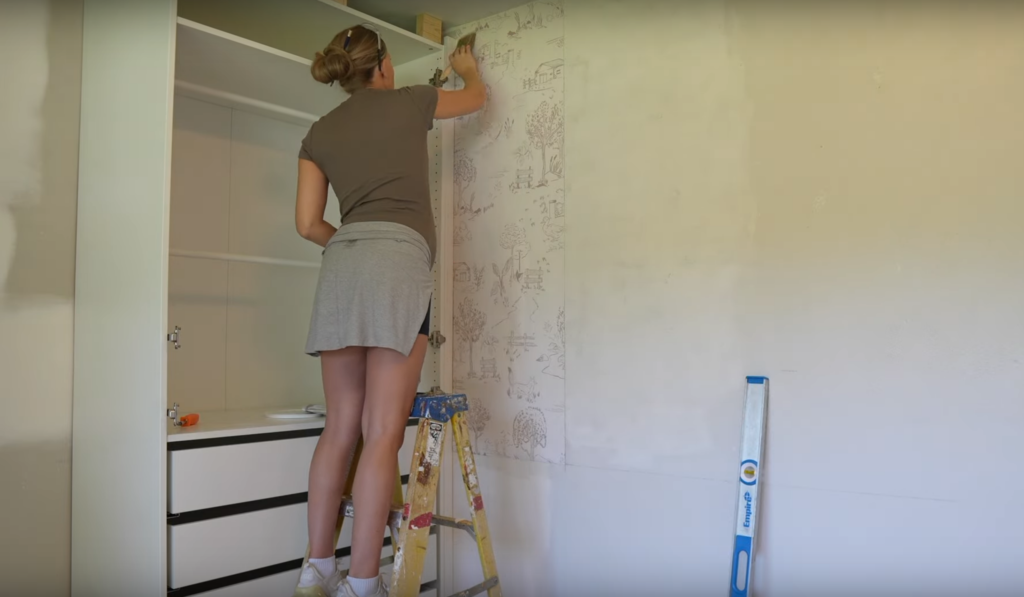
I used very light pressure for this. I either used a dry paint brush or a drywall knife to smooth it out. I wouldn’t recommend a drywall knife because you risk tearing the wallpaper, but like I said I just applied super light pressure to get any bubbles out and I was fine.
I recommend using this tool instead:
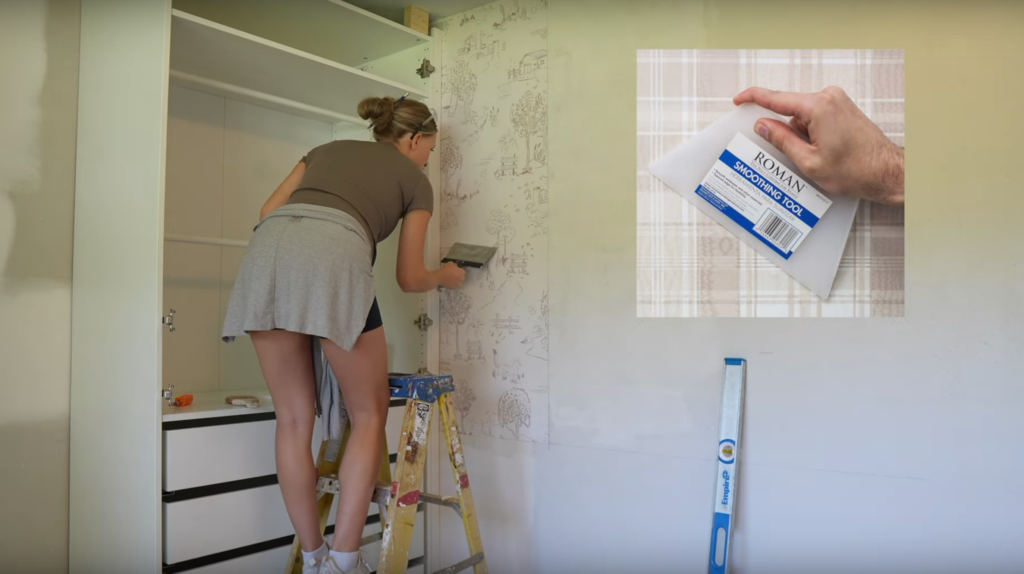
For each new panel I measured and marked a few guidelines where the next panel will end so that I knew how far out to spread on the wallpaper adhesive.
I slathered on the wallpaper adhesive and followed the same step as the first panel.
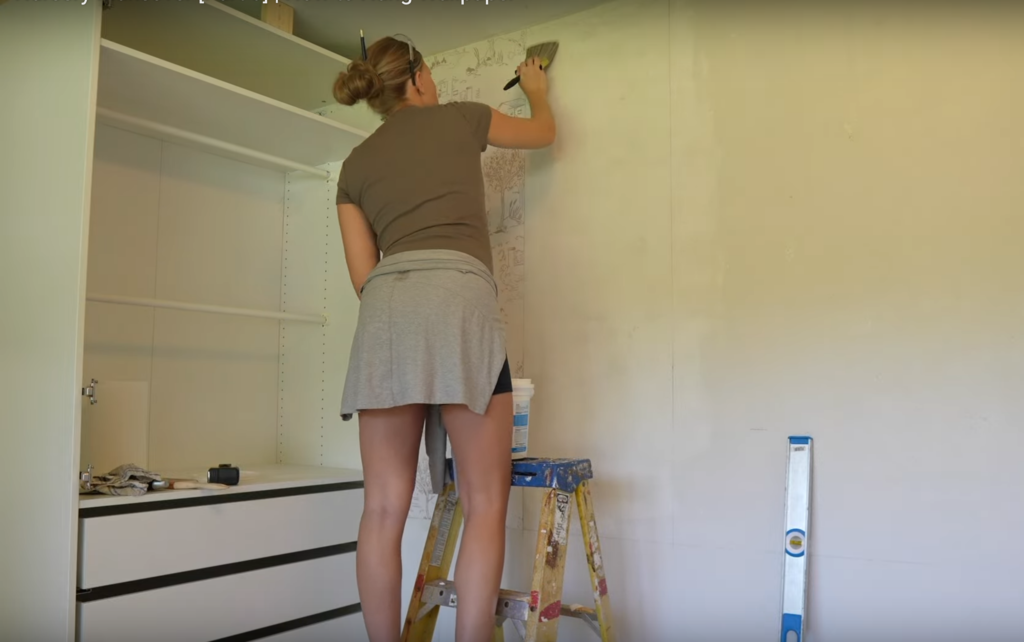
Where there was an outlet or a doorway I used either a utility blade or scissors to cut the wallpaper.
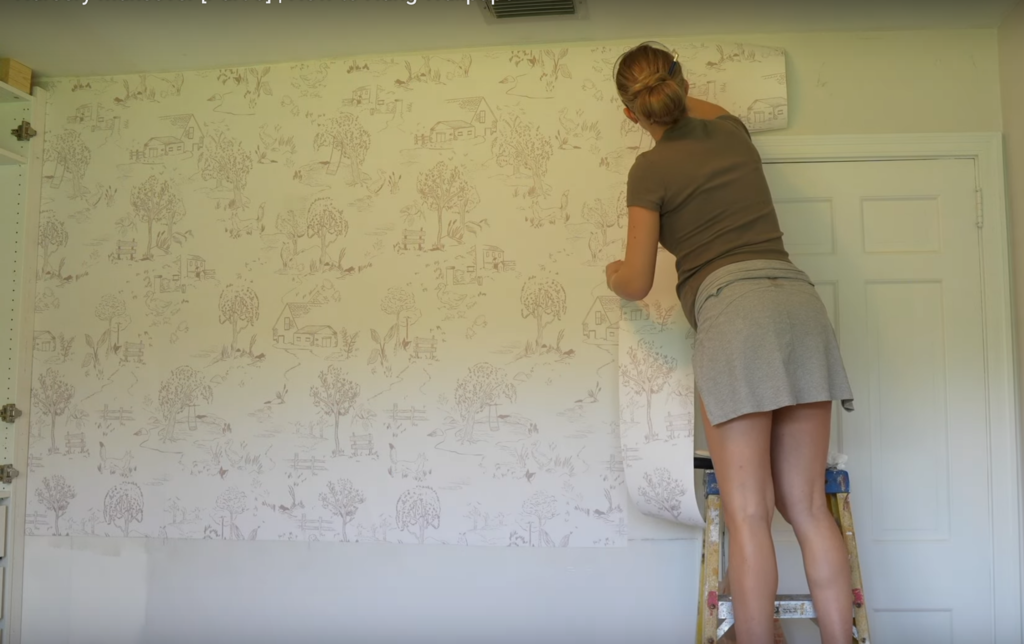
For this doorway panel I Measured and pre-cut the wallpaper first, hung the wallpaper and then cut out the switch as I went with my utility blade.

For the next wall, I didn’t have too many objects that I had to work around which was nice. I followed the same steps for this whole wall and this wallpaper was going up so fast!!

For the corner I decided to throw a bunch of wallpaper adhesive in the corner and then just wrap my wallpaper around the corner. You could cut the wallpaper and then start the pattern again, but this worked out just fine.
I plan to trim out these windows later on so I didn’t have to be super exact with where the wallpaper landed around the window. It’s going to be covered with 3 1/4” of trim anyway so I threw the wallpaper up and then used scissors to cut the window out.
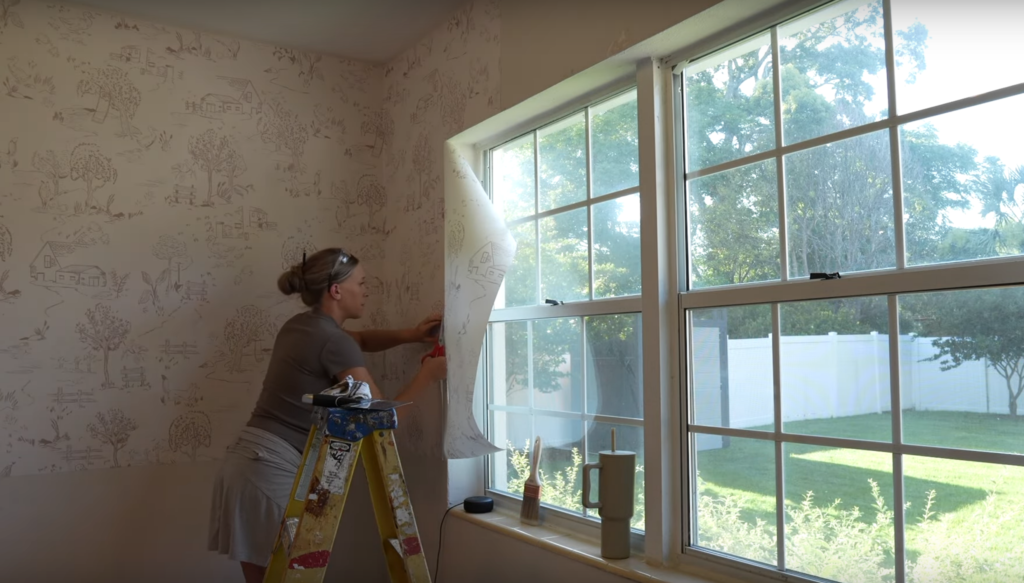
I mentioned earlier that you could see the two different tones of the gray paint and the white drywall compound on my first panel that I put up, so to avoid that I applied a coat of white primer to make the wall one solid color. I also primed the area in between the closets because there were tons of colors going on.
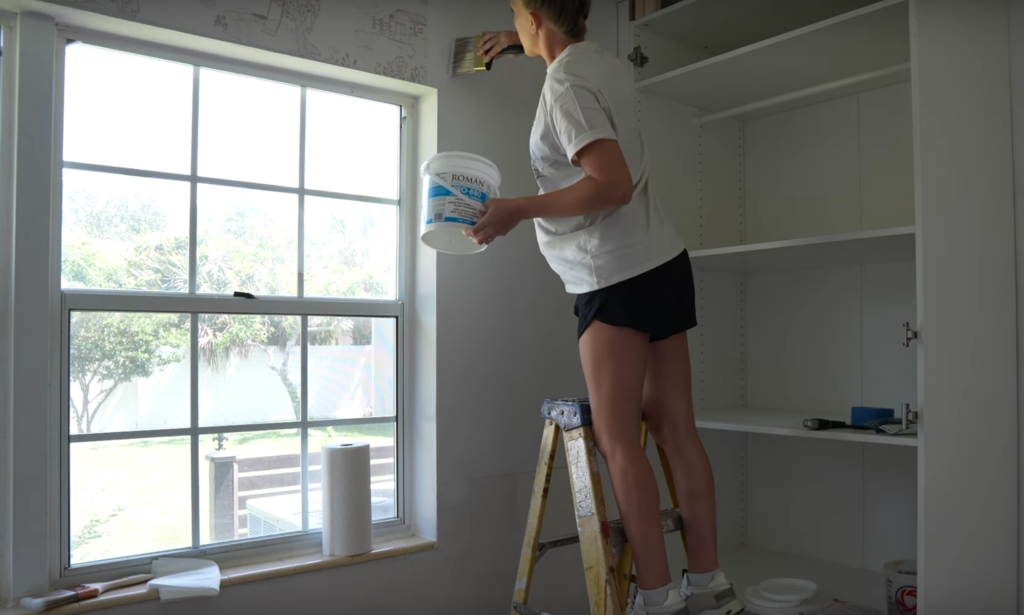
I decided to take the wallpaper all the way down in between the closets. I may add some fancy trim overtop but we’ll see.
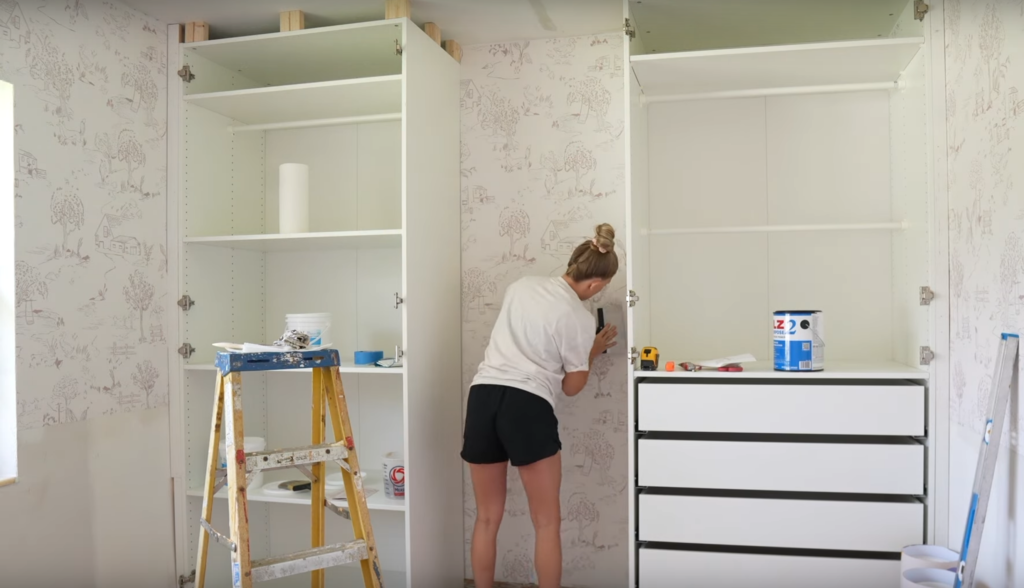
The wallpaper looks amazing but there are some areas where you can see the wall texture. We have very lightly textured walls and this wallpaper is very thick so I was a bit surprised but lesson learned… always take the time to prep your walls and make them smooth before hanging wallpaper.
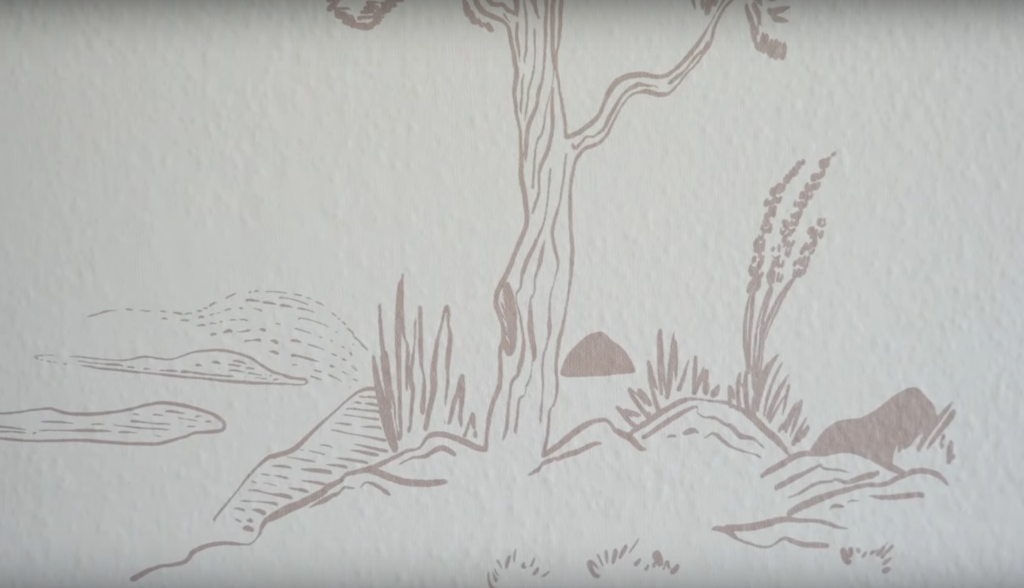

Check out more DIY tutorials HERE!








 #di
#di